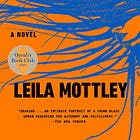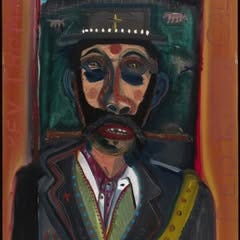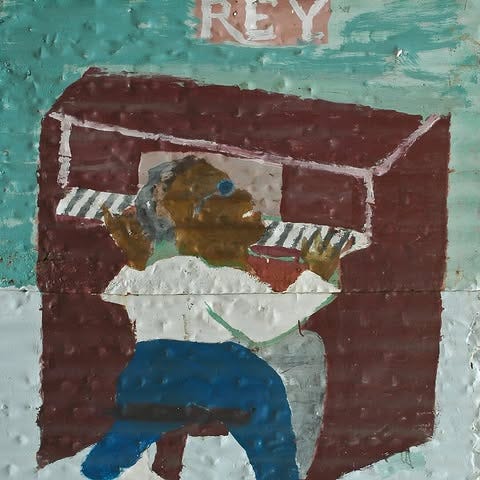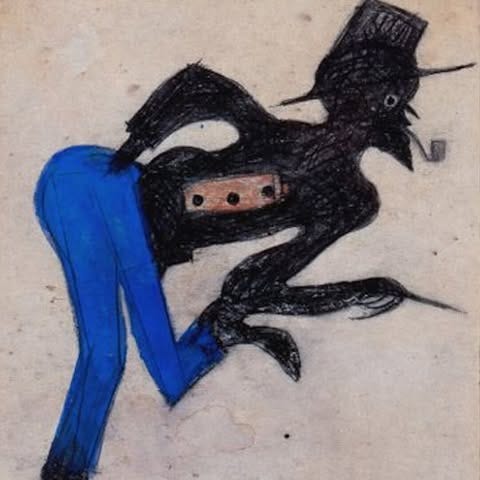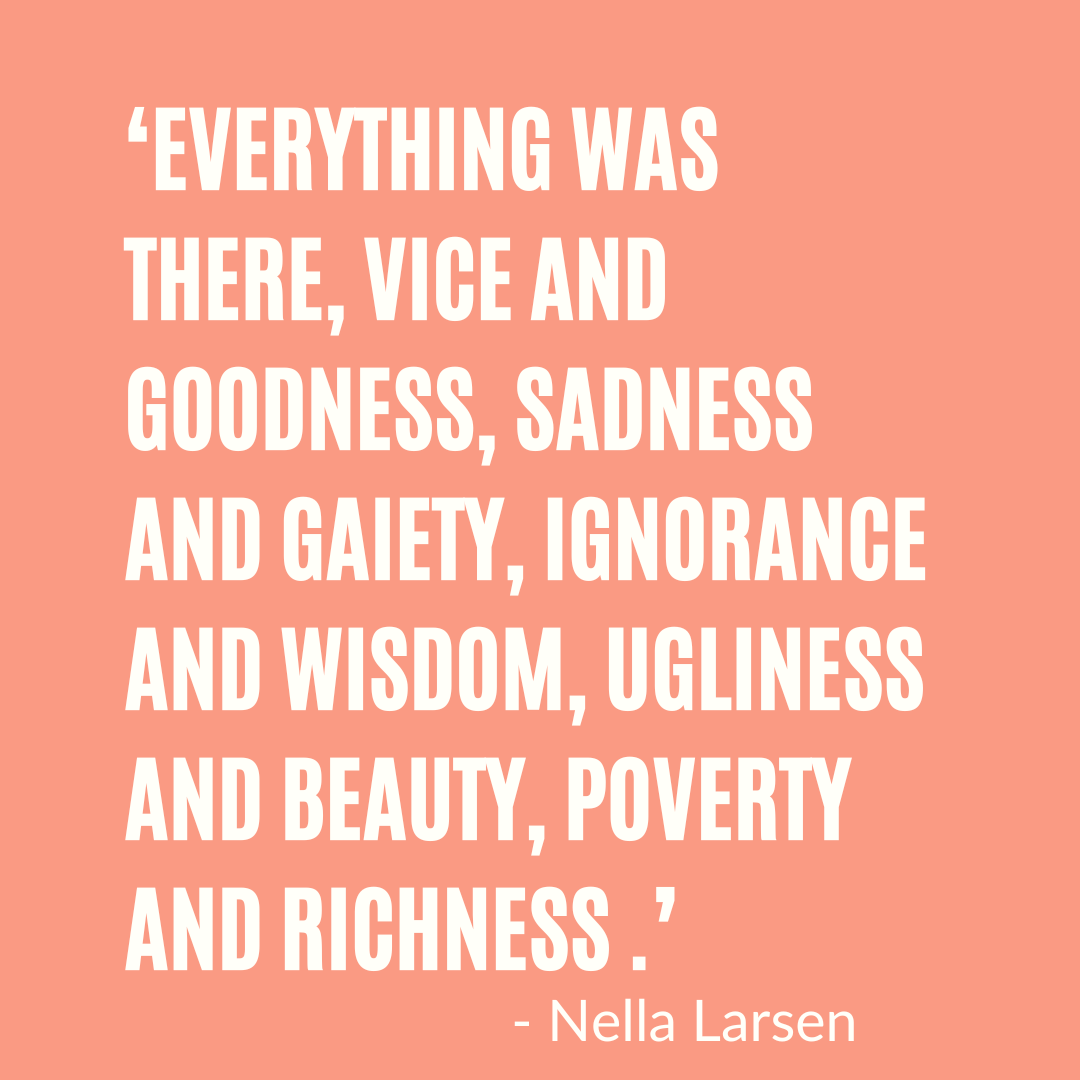Captioned Black Art
Your Curated Art Museum
Get cultured in five minutes or less . . .
“I say I don’t believe in nothing, except something about the way the night colors everything makes me want to.”
— Leila Mottley, Nightcrawling
A Snippet:
Did you know that at age sixteen, while a student at Oakland School of the Arts, Leila Mottley was chosen as Oakland’s 2018 Youth Poet Laureate?
As quoted in 2018, Leila Mottley stated, “I really want to focus on giving voice to the harrowing experience of displacement for youth in our communities, so I’m really excited to see what I can do.”
Mottley’s stunning 2022 debut was longlisted for the 2022 Booker Prize, making Mottley (at the time) the youngest author to have been nominated for the award.
Learn more about the author Oprah has praised as a, “Young poet [who has] wowed me with her ode and elegy to Oakland” . . .
133. “Reverend Reid” (1981)
“I grew up in a family in Chicago of people who dealt with color. My uncle was a body and fender person, who basically repainted Rolls-Royces and Cadillacs and limousines and things, and I basically grew up mixing paint for him. My mother was a baker, she specialized in Viennese pastries, and she'd get spun sugar rolled into really heavy buttercream cake decorations, things of that nature. So I grew up with the tactility and love of paint and color. In my mother's case I was actually able to eat it.”
— Frederick J. Brown
Did you know?
Did you know that Frederick Brown, born in Georgia and raised in Chicago's South Side, settled in a loft in Soho during the New York Art Renaissance (from 1970 to 1980) where he collaborated with jazz musicians like Ornette Coleman and Anthony Braxton, and abstract expressionist painter Willem De Kooning among others?
The 2002 documentary film, 120 Wooster Street, depicts Frederick Brown’s New York loft studio, which grew to be a central gathering place for artists, musicians, writers, dancers and performance artists.
Today, Brown’s work can be found in public and private art collections throughout the world, including the Smithsonian’s National Museum of American Art, the Metropolitan Museum of Art, the New Orleans Museum of Art and the American Jazz Museum.
Major art projects include his 1983 version of The Last Supper; The Assumption of Mary, a three-story tall mural painted in 1992 at Xavier University in New Orleans; The History of Art, a group of 110 interlocking paintings at Café Sebastienne in the Kemper Museum of Contemporary Art created in the 1990s; and his extensive series of over 350 portraits of jazz and blues musicians.
134. “Rey” (2016)
“I paint the spirit of the person, yeah!”
— Sam Doyle
Did you know?
Did you know that Sam Doyle devoted his life to painting the history of the St. Helena’s Gullah community, and did you know that St. Helena is a sea island in Beaufort County, South Carolina?
Doyle devoted himself to painting themes and characters from his Gullah community: descendants of West and Central Africans enslaved in the coastal regions of the southeastern United States, from North Carolina to Florida.
He also portrayed famous figures like Ray Charles and Jackie Robinson, as well as many local celebrities and characters from home-grown folklore.
After Doyle’s inclusion in the Corcoran Gallery of Art’s pivotal exhibition, “Black Folk Art in America 1930–1980” (1982), curated by Jane Livingston, the artist’s work brought him notoriety and praise.
In fact, the late Jean-Michel Basquiat on one occasion traded his own artworks for Doyle’s and Ed Ruscha paid tribute to the artist with his 1985 painting, “Where Are You Going, Man? (For Sam Doyle).”
135. Untitled (Man in Blue Pants)
Did you know? A non-Black journalist writing about Bill Traylor once stated, “Through some capricious blunder of the centuries, this old plantation Negro is painting like the prehistoric cave artists.”
Did you know?
Did you know that as a Black man born enslaved in Alabama, Bill Traylor (circa 1853–1949) is regarded today as one of the most important American artists of the twentieth century?
Traylor was an eyewitness to history: the Civil War, the Emancipation Proclamation, Reconstruction, Jim Crow segregation, the Great Migration, and the steady rise of African American urban culture within the South. When Traylor died, in 1949, he left behind more than one thousand unique works of art.
“The only thing that changed was the view.”
(Breathe In . . . Breathe Out)
Insiders vs. Outsiders
A STEM Grew Petals Newsletter
Next issue is next Thursday:
11am (Pacific), 2pm (Eastern)
Like Quotes?
Follow on Instagram (at Captioned Black Art)
Made in Silicon Valley (with love) by author Jafari Joseph.
Copyright (C) 2025 My STEM Grew Petals Publishing. All rights reserved.
STEM Grew Petals is a reader-supported publication. To receive new posts and support my work, consider becoming a free or paid subscriber.



